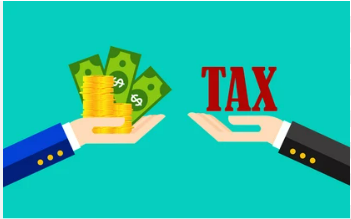
Why in News?
The article examines India’s tax revenue and its contribution to the central government’s expenditure. It addresses the common perception among Indians that they are overtaxed, comparing India’s tax-to-GDP ratio with other economies. The analysis highlights that while India’s tax revenue as a share of GDP is lower than that of many developed nations, it still funds a significant portion of government spending. The discussion is relevant in light of the upcoming Union Budget 2025-26, as the government navigates economic growth, fiscal deficit management, and tax reforms.
Introduction
Taxation is a fundamental pillar of any economy, providing governments with the resources needed to fund public services, infrastructure, defense, and welfare programs. In India, taxes play a crucial role in financing government expenditures, yet there is widespread perception that Indians are heavily taxed. However, statistical comparisons reveal that India’s tax-to-GDP ratio is significantly lower than that of advanced economies. This article explores the structure of India’s tax system, how much tax revenue funds government spending, and how India’s taxation compares with other nations.
Point-Wise Summary of the Article
- India’s Tax System and Revenue Collection
- Taxation in India comprises two major sources:
- Direct Taxes: Income tax, corporate tax, etc.
- Indirect Taxes: Goods and Services Tax (GST), excise duty, customs duty, etc.
- A significant portion of India’s government spending is funded by taxes, yet the total tax collection as a percentage of GDP remains lower than in developed nations.
- Government Spending Funded by Taxes
- Chart 1 in the article shows that in 2022:
- India’s tax revenue funded 58% of its total government spending.
- In comparison:
- The UK covered 89% of its spending with taxes.
- The US covered 75%.
- China’s government spending was largely supported by non-tax revenues, with a lower reliance on tax revenue.
- India’s reliance on tax revenue for spending is substantial, yet overall collection remains limited compared to global standards.
- Tax Revenue as a Share of GDP
- Chart 2 in the article compares tax revenues as a percentage of GDP for different countries in 2021:
- India: 11.7%
- US: 16.4%
- UK: 32.8%
- France: 24.2%
- Germany: 24.4%
- China: 14.6%
- India’s tax-to-GDP ratio is one of the lowest, even when compared to other developing economies.
- Despite this, a higher proportion of government spending is funded by tax revenue, indicating limited reliance on other forms of funding such as debt or external grants.
- State of the Economy and Tax Revenue
- India has witnessed strong tax revenue growth in recent years, particularly in:
- GST collections
- Corporate tax and income tax receipts
- However, despite growing tax collections, India’s tax-to-GDP ratio remains below that of developed economies.
- The lower tax-to-GDP ratio limits the government’s ability to increase public spending on health, education, and infrastructure.
- Less Tax, More to Spend?
- A common argument suggests lowering tax rates would increase economic activity and ultimately boost revenue.
- However, empirical data shows that reducing tax rates does not always lead to higher revenue collection.
- Countries with higher tax-to-GDP ratios tend to have better public infrastructure, education, and healthcare systems due to increased government spending.
- India’s Taxpayer Base and Compliance
- India has a low taxpayer base compared to its population size.
- Only about 6 crore Indians file income tax returns, which is a small fraction of the total population.
- Tax evasion and informal economy participation reduce the effective tax base, impacting revenue collection.
- Expanding the tax base through better compliance, digital taxation measures, and rationalizing exemptions can help improve India’s revenue position.
- Challenges in India’s Taxation System
- Narrow Tax Base: A significant portion of India’s economy operates in the informal sector, limiting tax collection.
- Tax Evasion: High levels of tax evasion, especially among high-net-worth individuals and businesses, reduce overall tax revenue.
- Lower Indirect Tax Compliance: While GST has improved tax compliance, leakages and evasion still persist.
- High Burden on Salaried Individuals: A large share of direct tax revenue comes from salaried employees, while a significant portion of wealthy individuals and businesses use loopholes to minimize tax liability.
- The Global Comparison: Lessons for India
- Countries with higher tax-to-GDP ratios invest more in welfare programs, infrastructure, and social security.
- India’s tax policies need to balance economic growth, fiscal responsibility, and public welfare.
- Expanding the taxpayer base, improving compliance, and simplifying tax laws can help India reach an optimal taxation structure.
Key Terms and Their Explanation
- Tax-to-GDP Ratio:
- Measures the proportion of a country’s total tax revenue relative to its GDP.
- A higher ratio indicates greater tax revenue collection as a share of national income.
- Direct Taxes:
- Taxes levied directly on individuals and businesses, such as income tax and corporate tax.
- Indirect Taxes:
- Taxes imposed on goods and services, such as GST, excise duty, and customs duty.
- Fiscal Deficit:
- The gap between government revenue and expenditure, often covered through borrowing.
- GST (Goods and Services Tax):
- A comprehensive indirect tax that replaced multiple state and central taxes.
- Progressive vs. Regressive Taxation:
- Progressive Tax: Higher income earners pay a higher percentage of tax.
- Regressive Tax: Everyone pays the same rate, placing a greater burden on lower-income groups.
Conclusion: The Future of Taxation in India
India’s taxation system plays a crucial role in funding government expenditure, yet its tax-to-GDP ratio remains significantly lower than in developed countries. This limits the government’s ability to increase public spending on critical sectors like health, education, and infrastructure. While India has made progress in tax reforms, challenges like tax evasion, a narrow taxpayer base, and reliance on indirect taxes remain.
To ensure sustainable economic growth and better public services, India must focus on:
- Expanding the taxpayer base through better compliance measures.
- Reducing tax evasion by enforcing stricter financial regulations.
- Simplifying tax laws to improve ease of doing business.
Balancing direct and indirect taxation to ensure equitable tax collection.




